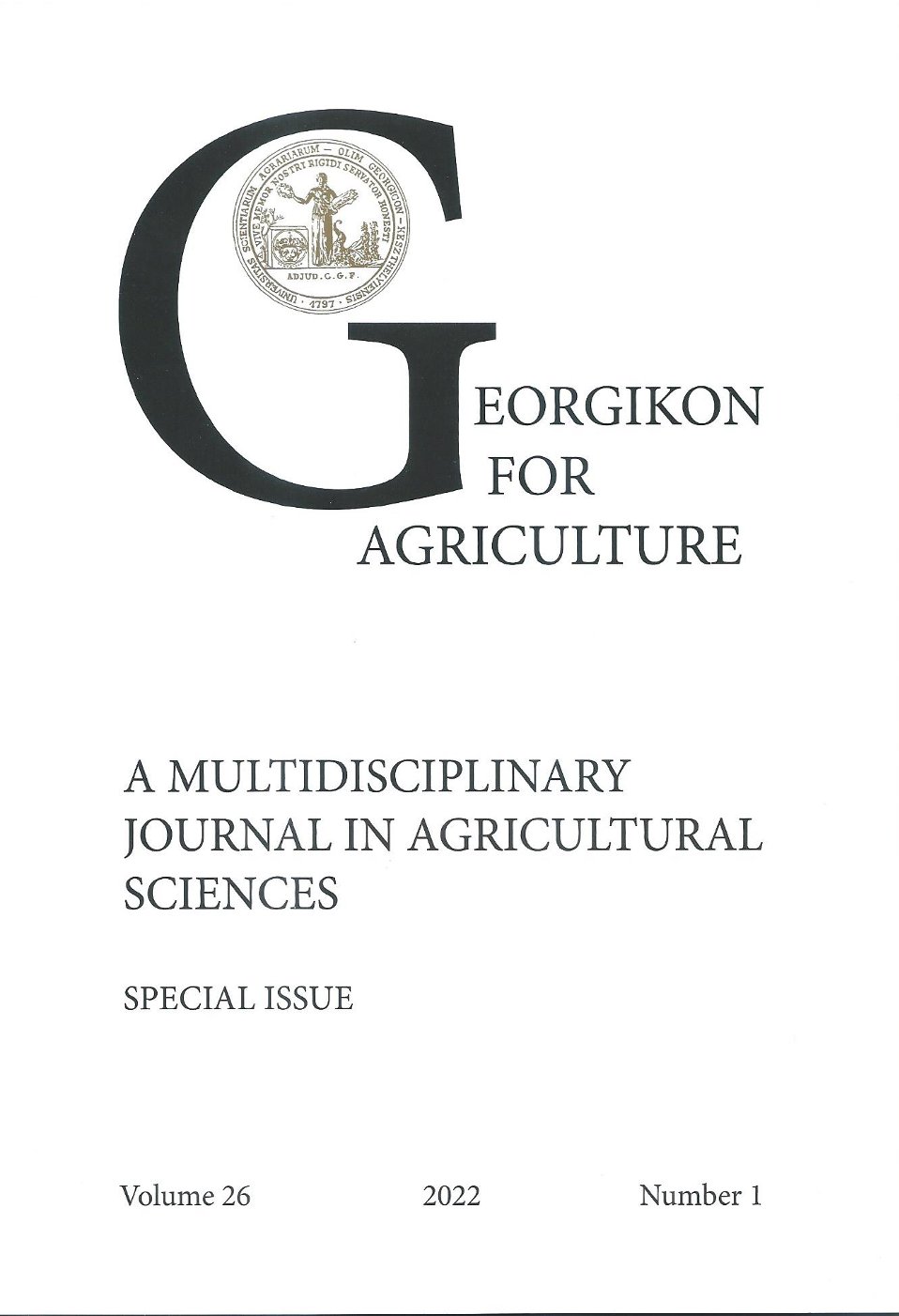A kadmium és a pendimetalin toxikus interakciójának vizsgálata csirkeembrión
Keywords:
cadmium chloride, STOMP 330 EC, chicken embryo, embryo mortality, joint toxic effectAbstract
The aim of this study was to determine the individual and combined toxic effects of STOMP 330 EC herbicide (330 g/l pendimethalin) and cadmium chloride on the development of chicken embryos. On the first day of incubation chicken eggs were injected by 0.1 ml of cadmium chloride solution (0.01%) and/or by 0.1 ml of STOMP 330 EC (1.25%). The chicken embryos were examined on day 19 by the followings: rate of embryo mortality, body weight, type of developmental anomalies. Body weight of the live embryos was evaluated with variance analysis, while RXC Chi2 test was used to statistically evaluate embryo mortality and developmental deformities. Our teratogenicity study revealed that the combined administration of cadmium chloride and pendimethalin containing herbicide formulation (STOMP 330 EC) caused a reduction in the body weight of embryos and increased the rate of embryonic mortality. The joint toxic effect of cadmium chloride and STOMP 330 EC is an additive effect compared to the individual toxicity of the test materials.
References
Budai, P., Fejes S., Várnagy, L., Somlyay, I., Molnár, E. and Takács, I. 2000. Toxicity of a mancozeb containing fungicide formulation and lead acetate to chicken embryos after administration as single compounds or in combination. Med. Fac. Landbouww. Univ. Gent. 65(2b). 881-886.
Budai, P., Fejes, S., Várnagy, L., Somlyay, I. and Takács, I. 2001. Teratogenicity test of dimethoate containing insecticide formulation and heavy elements (Cu, Cd) in chicken embryos after administration as single compounds or in combination. Med. Fac. Landbouww. Univ. Gent. 66(2b). 885-889.
Juhász É. 2009. Herbicidek (STOMP 330 EC, Dikamin D) és nehézfémek (réz, kadmium, ólom) egyedi és együttes méreghatása madárembriókon. Doktori (PhD) értekezés. Pannon Egyetem, Georgikon Kar, Keszthely.
Kránicz G. 2017. A kadmium-szulfát és a MYSTIC 250 EC fungicid együttes toxicitásának vizsgálata madárembriókon. Diplomadolgozat. Pannon Egyetem, Georgikon Kar, Keszthely.
Varga, T., Hlubik, I., Várnagy, L., Budai, P. and Molnár, E. 1999. Embryonic toxicity of insecticide Sumithion 50 EC and herbicide Fusilade S on pheasant after individual or combined administration. Acta Vet. Hung. 47(1). 123-128.
Várnagy, L., Varga, T., Hlubik, I., Budai, P. and Molnár, E. 1996. Toxicity of the herbicides Flubalex, Fusilade S and Maloran 50 WP to chicken embryos after administration as single compounds or in combination. Acta Vet. Hung. 44(3). 363-376.
Várnagy, L., Budai, P., Molnár, E., Füzesi, I. and Fáncsi, T. 2001. Teratogenicity testing of BI 58 EC (38% dimethoate) in chicken embryos with special respect to degradation of the active ingredient. Acta. Vet. Hung. 49. 353-361.
Downloads
Published
Issue
Section
License
Copyright (c) 2022 Szabó Rita, Major László, Lehel József, Budai Péter

This work is licensed under a Creative Commons Attribution-NonCommercial-NoDerivatives 4.0 International License.
Cikkre a Creative Commons 4.0 standard licenc alábbi típusa vonatkozik: CC-BY-NC-ND-4.0. Ennek értelmében a mű szabadon másolható, terjeszthető, bemutatható és előadható, azonban nem használható fel kereskedelmi célokra (NC), továbbá nem módosítható és nem készíthető belőle átdolgozás, származékos mű (ND). A licenc alapján a szerző vagy a jogosult által meghatározott módon fel kell tüntetni a szerző nevét és a szerzői mű címét (BY).




